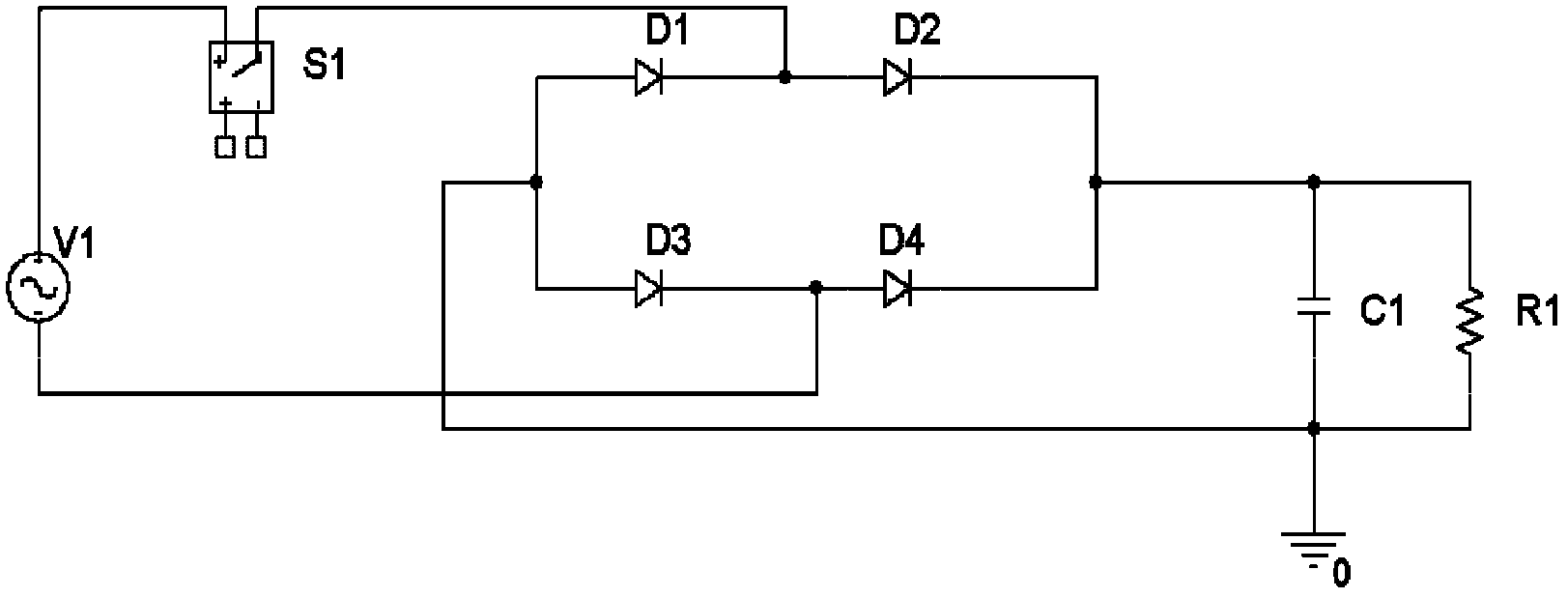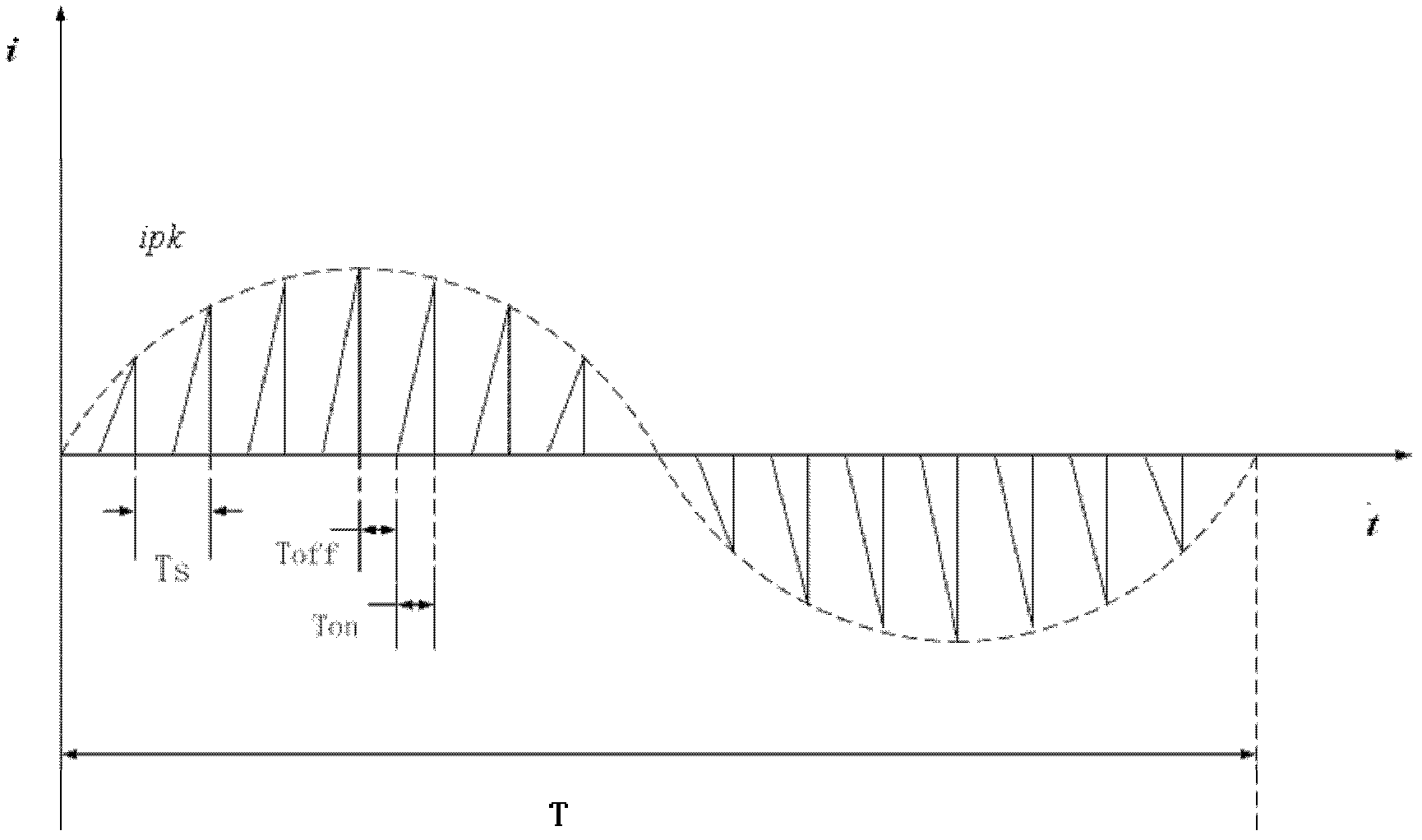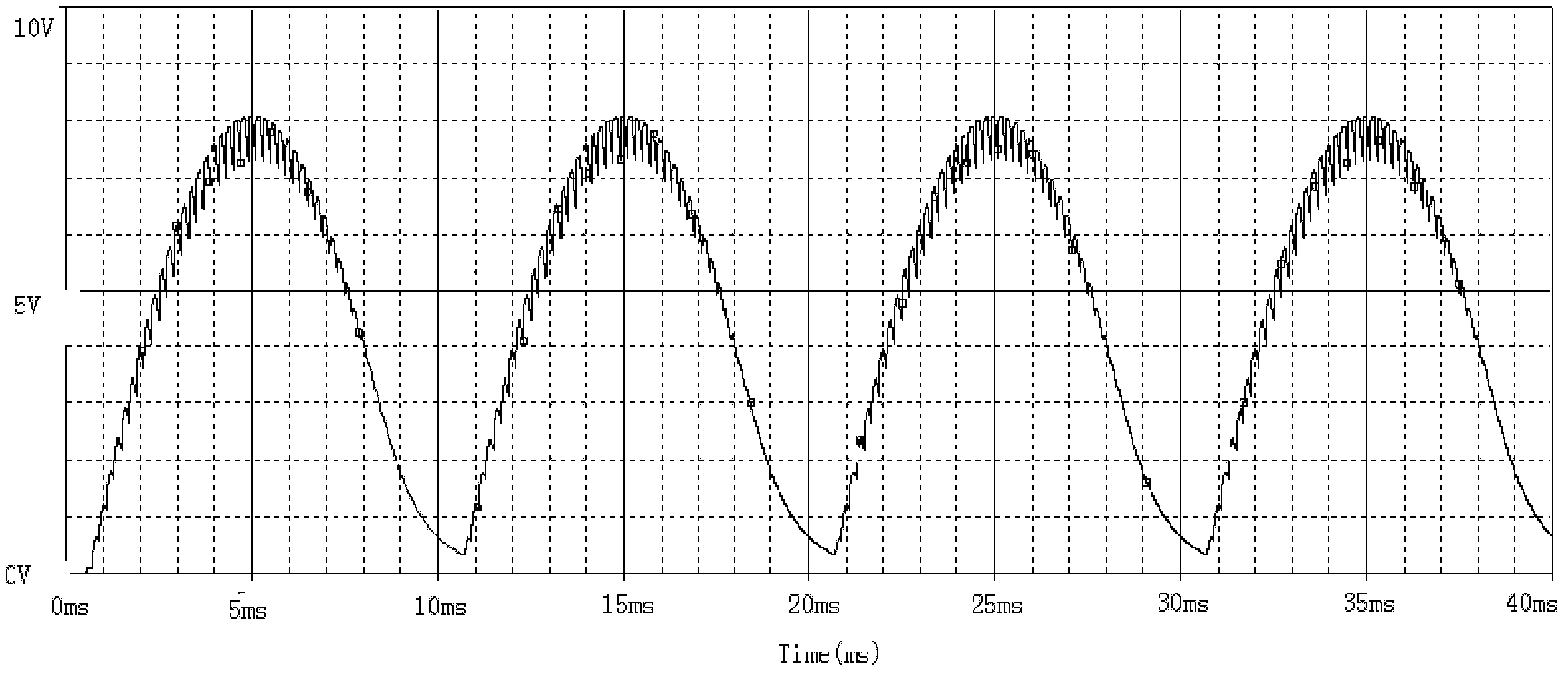Self-powered conditioning circuit for wireless sensors based on space electromagnetic energy
A wireless sensor and conditioning circuit technology, which is applied to electrical components, output power conversion devices, and irreversible AC power input to DC power output, etc. It can solve the problems of different circuit transmission efficiencies and different control signal duty ratios.
- Summary
- Abstract
- Description
- Claims
- Application Information
AI Technical Summary
Problems solved by technology
Method used
Image
Examples
Embodiment 1
[0066] Embodiment 1: as Figure 7 As shown, the wireless sensor self-supply conditioning circuit based on space electromagnetic energy includes an external input power supply V3, the external input power supply V3 is connected to the AC input terminal of the rectified full bridge, and the DC output positive terminal and negative terminal of the rectified full bridge There are four branches connected in parallel, among the four branches, the first branch is a capacitor C2, and the capacitor C2 is connected in parallel with the second branch composed of the switching element M and the inductor L2 in series, and the diode D5 and the capacitor C3 The third branch formed in series is connected in parallel to both ends of the inductor L2 in the second branch, and the fourth branch formed by the load R3 is connected in parallel to both ends of the capacitor C3 in the third branch. The anode of the diode D5 in the third branch is connected in series with the capacitor C3. One end of ...
Embodiment 2
[0068] Embodiment 2: as Figure 9 As shown, the wireless sensor self-supply conditioning circuit based on space electromagnetic energy includes an external input power supply V4, and the output of the external input power supply V4 is connected in parallel with two T-shaped circuits, which are T-shaped circuit I and T-shaped circuit II, and the capacitor The parallel branch of C4 and load R4 is connected to the output terminals of the two T-shaped circuits. The T-shaped circuit I includes a branch circuit composed of an inductor L1 connected in series with the anode of a diode D1, and a high-frequency switch S1 is connected to the anode of the diode D1. The T-shaped circuit II includes a branch circuit composed of a high-frequency switch tube S2 connected in series with the anode of a diode D2, and an inductor L2 is connected to the anode of the diode D2. One end of the power supply is grounded.
[0069] Such as Figure 9 As shown, the technical solution does not contain th...
PUM
 Login to View More
Login to View More Abstract
Description
Claims
Application Information
 Login to View More
Login to View More - R&D
- Intellectual Property
- Life Sciences
- Materials
- Tech Scout
- Unparalleled Data Quality
- Higher Quality Content
- 60% Fewer Hallucinations
Browse by: Latest US Patents, China's latest patents, Technical Efficacy Thesaurus, Application Domain, Technology Topic, Popular Technical Reports.
© 2025 PatSnap. All rights reserved.Legal|Privacy policy|Modern Slavery Act Transparency Statement|Sitemap|About US| Contact US: help@patsnap.com



